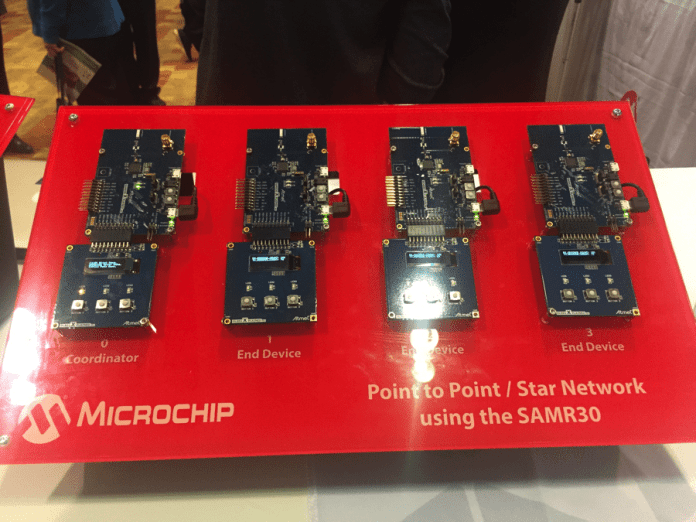Microchip is targeting connected home, smart city and industrial applications with its new SAM R30 RF microcontroller. The company sees growing demand for wireless solutions that can be powered by one small battery for an extended period of time. The SAM R30 leverages the ARM Cortex M0+ architecture, which Microchip describes as the most energy-efficient ARM-based architecture.
The chipset supports the 780 MHz bands, which are used in China for IoT applications, the 868 MHz bands, which are used in Europe, and the 915 MHz bands, which are often referred to in the United States as industrial, scientific and medical bands.
At IoT DevCon 2017, Microchip demonstrated how the SAM R30 can function as part of a point-to-point network and as part of a star network. The company said mesh networking will be available later this year.
Microchip also showed its SAM L21 microcontroller powering a Philips Hue light bulb. David Richkas, Microchip product marketing manager, said he could control the light from outside the building, and that the SAM L21’s range can extend to two hundred yards in ideal conditions.
Richkas said Microchip has created chipsets for many of the low-power wide area connectivity solutions designed for the IoT, including LoRa, Sigfox, and Zigbee. He said that in the United States he sees high demand for LoRa-based solutions.
Microchip’s sub-1GHz microcontroller will go up against a similar solution from Texas Instruments and a module solution made by STMicro. Chip developers are working hard to reduce the footprint and power requirements of their IoT solutions without sacrificing performance.

